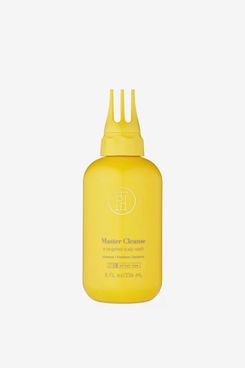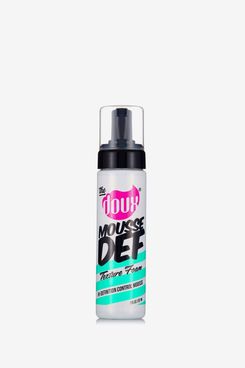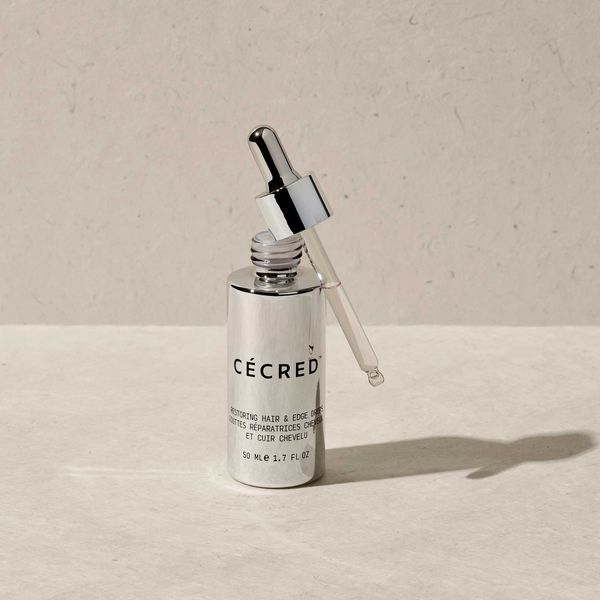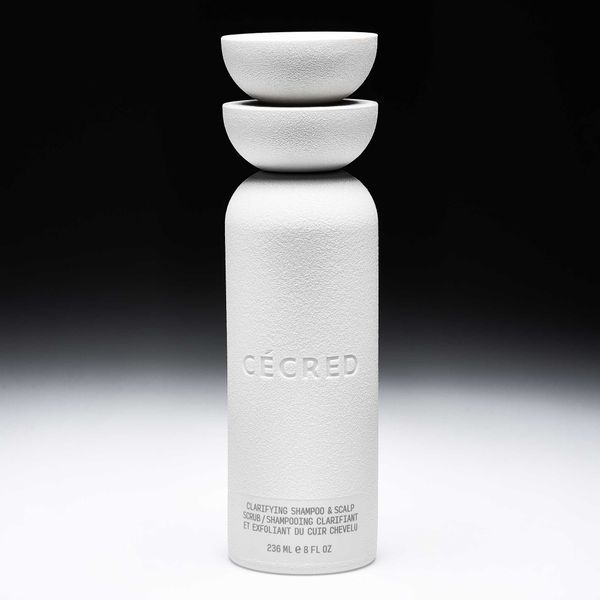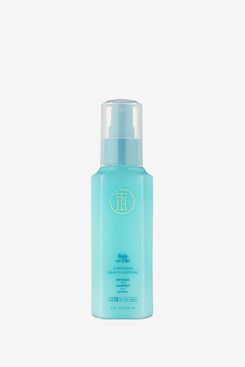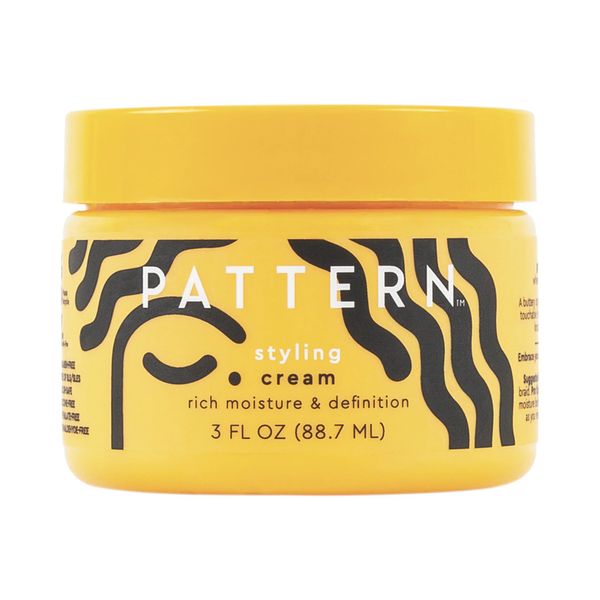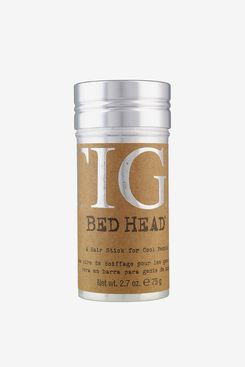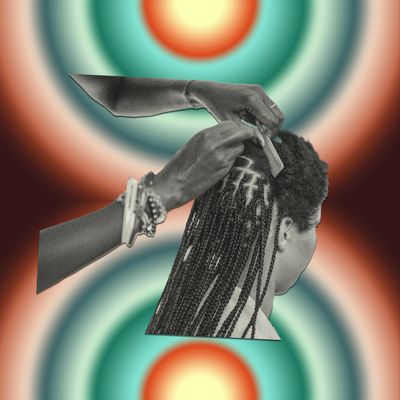
Are knotless braids worth the extra money?
Are knotless braids better for your hair and scalp health than box braids? If so, how much better, since there are trade-offs like cost? –Tamara
The lore of knotless braids is, at this point, pretty well known. As they’ve risen in popularity, their reputation as the “healthier” alternative to traditional braids, or box braids, has grown. But stylists I spoke to said that when you’re getting braids installed, there are numerous factors that affect the health of your hair and scalp, so making a blanket statement like “knotless braids are best” would be irresponsible. “Knotless braids could add tension to the scalp that box braids wouldn’t, or vice versa,” explains Tukia Allen, an educator and coach at Aveda Arts & Sciences Institute Atlanta, a cosmetology school. “It depends on technique, tension, and the length of the hair.” And, of course, the skill and experience of your braider.
Read on to make sure you get the style you want and have all the information you need to determine whether paying extra (knotless braids often cost more than traditional braids because they can take longer to install) is worth it.
What’s the difference between traditional and knotless braids?
For the sake of this article, I’m going to assume you’re asking about braiding techniques used when adding hair, whether natural, synthetic, or plant-based. (As you probably know, the knotless-versus-traditional debate is less relevant when you’re not adding hair, since there’s no need to create a base to attach extensions to.) With that in mind, the biggest difference between knotless and traditional braids is what’s going on close to your scalp. “With the traditional technique, a knot is created at the base to attach to the [installed] hair, and then the braid is formed,” explains Kamilah Gerestant, a knotless-braid educator and stylist in New York City. (FWIW, the “knot” isn’t necessarily the type you’d make when tying shoelaces; it’s a wrapping technique that may or may not include elastics.) “With knotless, the hair is added piece by piece to each leg of the braid — there are three legs that criss-cross to form a braid, and each leg gets a piece of extension.”
The knotless technique tends to create less bulk at the base, so when the style is finished, more scalp will probably be visible and the braids will likely lie flatter to your head. (Those attributes could be pros or cons depending on your preferences.) One other thing that makes knotless braids different is the length of natural hair required: “With knotless braids, you want to make sure hair is of a certain length or the style won’t be long lasting,” says Allen. “I recommend at least three inches.”
Why are knotless braids considered healthier?
A “knot” or attachment point can be painful depending on how tight it is, and there will be varying amounts of tension on the strands in the base section (e.g. hairs on the edge of a section may be pulled tauter than those in the middle of the section). Over time, this tension can affect the health of the hair and its follicle. With the knotless technique, a braider (if they’re skilled!) can create less tension at the base. Plus, the weight of the added hair is distributed more evenly. “Think of it as the pressure of wearing heels versus flats, where the heels are traditional braids with knots and the flats are the knotless braids,” Gerestant says. “Your weight is the same, but you feel it differently.”
And it’s not just the installation where things differ. With knotless braids, the removal may be less painful and (again, depending on the skill or experience of the person doing the braid takedown) lead to less breakage. “With knotless, it’s as simple as unravelling a braid and the added hair falls out,” Gerestant says. With a traditional installation, unwinding the base and releasing the tension point, or knot, can stress some of the strands to the breaking point.
Which braids last longest?
“It depends on the person and their hair density and texture,” says Allen. “Knotless braids could last longer, but if the hair is finer or the texture is less dense, then that could mean that they need to get it done again sooner.” Regardless of the braiding technique, the type of hair added, or how the braids look as your hair grows, you should take down the braids after four to six weeks for the sake of your scalp and hair health. “A lot of times, clients justify leaving it in longer to get their money’s worth, but nothing is more valuable than having healthy hair and a healthy scalp when you remove the braids,” Gerestant says. “At the six-week mark, the hair needs to be properly cleaned, moisturized, and reset.”
Why do knotless birds cost more?
“When it comes to cost, that topic is layered and complicated because it varies based on skill, location, human versus synthetic hair, amenities, and business,” Gerenstat says. But, in general, the knotless technique requires more practice to do well, and there are fewer braiders trained to do it. On top of that, time is a huge factor. To put it really simply, with traditional braids, the braider is only attaching hair to each section once, whereas the knotless technique is more intricate, because the hair is attached — or, more accurately, fed into the braid — in three places. Depending on the technique and the braider’s speed, a full head of braids can take anywhere from three to eight hours or more. “Many clients don’t factor in the toll braiding takes on our bodies and hands,” Gerenstat says. “It’s a beautiful end result but tedious work.”
How can I keep my scalp and hair healthy and prevent breakage?
Ask your braider how to care for and maintain your braids and scalp and then follow their guidelines! Their cleansing and care instructions are going to take into account your hair’s condition, the products used during the braid installation, and many other factors. Allen says she teaches clients how to avoid product build-up, keep the scalp clean and the hair moisturized, and prevent extra tension. “Some people will put fresh braids into a ponytail, and that can cause stress on the hair or lead to traction alopecia,” Allen says. “We always recommend people wait three to five days after braid installation before putting it up.”
Even Gerestant, who is an advocate for knotless braids, says the technique itself doesn’t guarantee a long-lasting, painless style with zero breakage. There are other factors to consider, the most important of which is how you feel: “My best tip for clients and people who have not sat in my chair is: If you feel something, say something.”
Some products to take care of knotless braids:
Cut Beauty Editor Asia Milia Ware swears by this scalp cleanse because the applicator applies directly to the scalp.
Ware also loves this mousse because it keeps the braids shiny and fly away hairs down.
Ware swears by these edge drops to promote growth and restore hair, while having extra tension on the scalp.
Cut Editor-In-Chief Lindsay Peoples swears by this shampoo to keep her braids looking good.
Peoples also loves this leave-in conditioner.
Peoples loves this curly cream for its thick texture.
Send your questions to [email protected]. (By emailing, you agree to the terms here.)



